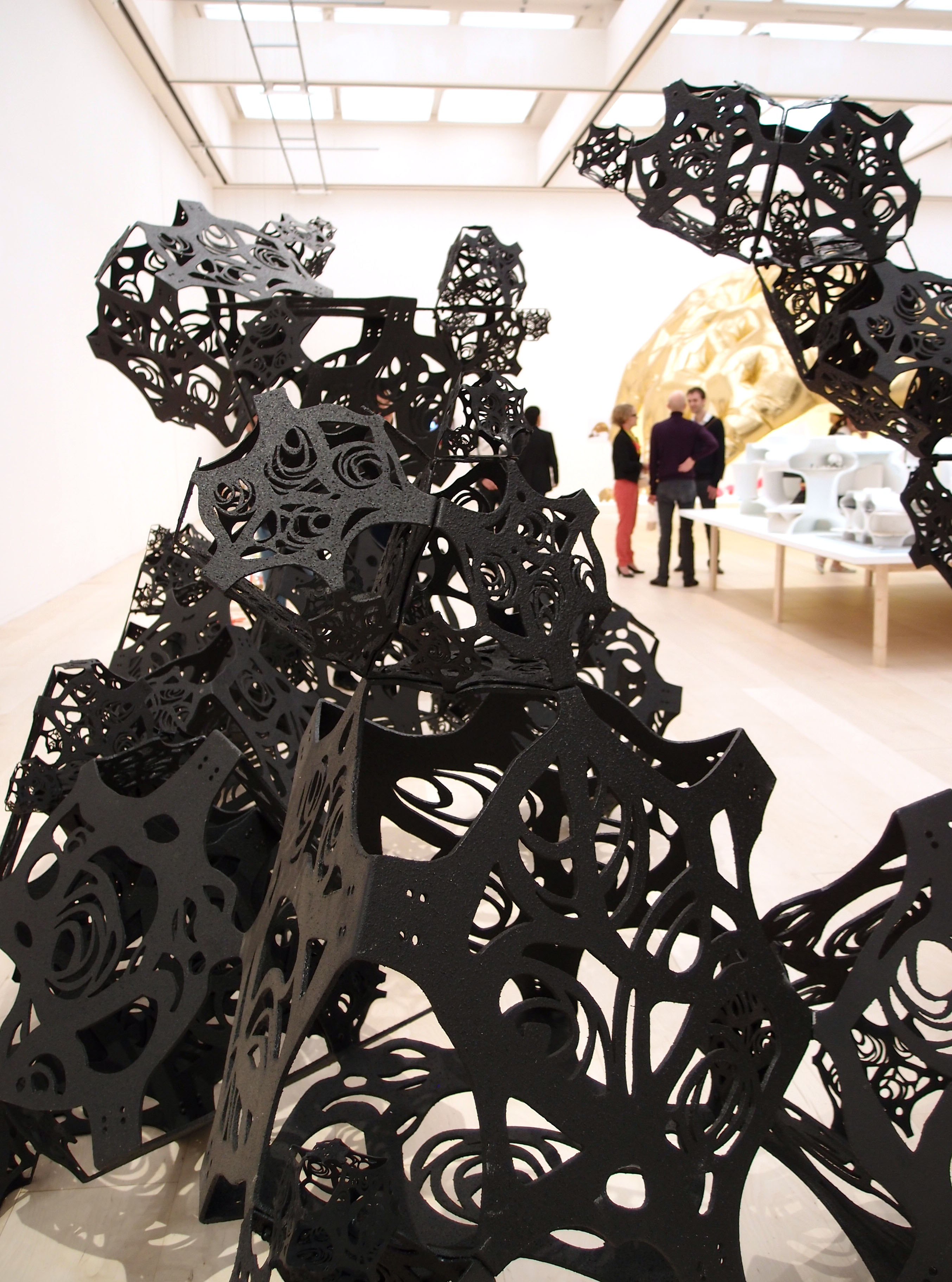Staging an exhibition of architecture, perhaps more than any other art form, demands a curatorial grasp of space-making. In the inevitable absence of the built reality, stand-ins in the form of drawings, models, photographs and film are drafted in to explain and evoke architectural ideas and experiences. While often interesting in themselves for their graphic, sculptural or material qualities, these things bear the pathos of being forever subordinate to their absent referents.
Given this, it is the shaping of the exhibition space itself that is the curator's most powerful asset in communicating architectural sensibilities and atmospheres. The curator must become an architect.
With curation by SANAA and Yuko Hasegawa — two of the most influential voices shaping the contemporary landscape of art and architecture — the Museum of Contemporary Art, Tokyo's new show, "Architectural Environments for Tomorrow," has been eagerly anticipated. Declaring an ambition to map "new spatial practices in architecture and art," and with a lineup of 28 architects and artists from 14 countries, the exhibition promises a window into an incipient spatial sensibility emerging globally. The same curatorial team was responsible for setting the agenda of last year's widely acclaimed Venice Architecture Biennale, and many who contributed to that event are gathered together again in this show, offering the tantalizing prospect of Venice's vivid ferment of ideas right here in downtown Tokyo.
Disappointingly, and remarkably given the architectural firepower assembled, the show fails to ignite. The whole is here most definitely less than the sum of its parts. In most cases, each photograph, model, or installation reveals the pith and force of a strong individual talent or sensibility; however, the overall staging of the show tends to blunt their edges, and rather than tease out connections or mediate relations, it ends up muddying the total experience.
Despite the bold claim at the outset that "the exhibition space appeals to the body and senses to produce a statement of 'the future of architectural space,' " there is no compelling spatial experience to be had within the exhibition space as such. The lighting is flat, the spatial arrangements feel arbitrary rather than liberated, and the atmospherics are dull. Moreover, the sequencing of works lacks narrative content and fails to build emotional power. All in all, the staging of the show has something of the banal directness of sales tables at a discount bazaar — without its cheerful vulgarity.
It is in the works themselves that we must look for glimpses of spatial sensibilities for the future. Here, thankfully, the selection is rich in artistic inspiration and diverse in media and presentation, acknowledging the sensory foundation of the spatial imagination.
A number of works are by visual artists who engage with architecture as a way of reading the world, re-influencing in turn the architectural imagination in a feedback loop between space and image. Photographic works by Walter Niedermayr and Luisa Lambri attest to a quality of vision that is both all-encompassing and intricately fine-grained; filmic explorations of SANAA's buildings by Fiona Tan and Wim Wenders employ duration and 3-D techniques respectively to capture architecture's complex temporality, combining its enduring presence on a stable site with the ever-shifting movements and experiences of its inhabitants. With her "Garden Carpets," textile designer and landscape architect Petra Blaisse weaves literally between the photographic image and constructed or planted textures in space, an intrinsically fascinating translation that is also encountered with particular intensity in the wonderful "Garden Wall" metal tapestry of throwaway bottle seals by Ghanaian artist El Anatsui.
The bulk of the contributions, however, are by architects. As co-curators, Kazuyo Sejima and Ryue Nishizawa of SANAA have not been bashful in making the refined naturalism of their own work a significant presence in the show — in addition to the filmic works, there are large models of the fluid interior landscapes of their Rolex Learning Center in Switzerland and the Teshima Art Museum in Kagawa Prefecture.
Genealogical lines can also be traced among the Japanese contingent, linking SANAA both to the voluptuous sculpting of socio-spatial forms by Sejima's mentor, Toyo Ito, at his Taichung Opera House in Taiwan, and to the surrealistic minimalism of Sejima's disciple Junya Ishigami, who vainly attempts to blow a "soap bubble in glass" on a 9-meter-square section of the floor of the museum.
The sensibility of Ito, arguably the grandfather of many of the tendencies on display, but characteristically reticent here, is evident in the complex spatial interrelationships that characterize the work of two other young Japanese architects shown, Sou Fujimoto and Akihisa Hirata. The latter has also contributed a full-size pavilion in the museum forecourt, an "artificial tree" with a faceted white canopy made of folded triangles of steel.
If there is a key concept animating these diverse visions, it is nature. Two potent ways of reading this idea can be seen: nature as the "organic"; and nature as "environment." The former is exemplified in the unfolding fractal geometries of Matthew Ritchie's "The Dawn Line" and the proliferating bamboo clouds of the Starn brothers.
Nature as "environment" dissolves the boundary between interior and exterior, opening the architectural gaze to landscapes, atmospheres and built vernaculars. Piet Oudolf's gardens are brought to life by his botanical pointillism; Matthias Schuler and Tetsuo Kondo's vapor chamber captures atmospheres; while the tenuous intervention of Office Kersten Geers David van Severen consists of nothing more than shadecloth over a courtyard, making a subtle exhibit of the MOT building itself.
Here, the sensibility underlying these new spatial practices finally achieves its goal amid the intransigent spaces of the museum: a breath of open air.
"Architectural Environments for Tomorrow" at the Museum of Contemporary Art, Tokyo, runs till Jan. 15; admission ¥1,100; open 10 a.m.-6 p.m., closed Mon. For more information, visit www.mot-art-museum.jp.



















With your current subscription plan you can comment on stories. However, before writing your first comment, please create a display name in the Profile section of your subscriber account page.